The Art of Play
by Carlo Borloni
At the heart of every sport lies a grammar of gestures: sudden bursts and calculated stillness, unspoken codes, invisible forces in constant negotiation. Sport is not just performance. It is composition. And Tormius, with The Art of Play, does not depict it, he reimagines it.
Across eleven works, each abstractly inspired by a different sport, the artist translates movement into visual tension, structure into rhythm, rules into aesthetic possibility. There are no bodies in these images. No arenas, no tools. And yet, one senses the arc of a tennis ball, the snap of a hockey puck, the steady preparation of a sprinter before launch. It is geometry set to pulse, composition that speaks of impact without contact.

Baseball, Tormius
Tormius’ approach to abstraction is both formal and intuitive, a paradox he embraces. His works draw heavily from the great lineage of geometric modernism: the Bauhaus, De Stijl, Russian Constructivism. Echoes of El Lissitzky’s spatial experiments, Malevich’s radical minimalism, and Theo van Doesburg’s playful modularity reverberate across the canvas. And yet, this is not homage, it is transformation. Through digital tools and a deeply personal vocabulary, Tormius reshapes those avant-garde legacies into a language that is unmistakably his own.
There is, in his compositions, a sense of musicality, a choreography of form that plays with harmony and dissonance. Each piece seems to hum with internal logic, like a visual score unfolding across the field of the image. Lines cut and cross, blocks of color crash into silence, negative space becomes breath. This sensitivity to rhythm reveals the artist’s fascination with contradiction: chaos and order, absurdity and rigor, clarity and obscurity. Each tension is carefully held, never resolved, like the taut body of an athlete just before motion.

Fencing, Tormius
What distinguishes The Art of Play is its ability to evoke without narrating. In an era where so much digital art chases immediacy, Tormius pursues a slower impact, one of curiosity, of investigation. His works ask to be deciphered. They offer no immediate reward. Instead, they invite the viewer into a visual puzzle, a space where contemplation becomes a form of participation. Like sport itself, they demand engagement. They reward attention.

Football, Tormius
Equally essential to the series is the notion of structure. Not as constraint, but as origin. Every composition, no matter how playful or abstract, emerges from a scaffolding of precision. Forms are not randomly arranged. They are calibrated, tested, refined. “Structure is the heart of the work,” Tormius notes, a sentiment that recalls Mies van der Rohe’s famous adage: less is more. Here, minimalism is not an aesthetic choice but an ethical one. Simplicity becomes depth. Limitation, freedom.
And yet, for all its rigor, The Art of Play remains light. There is joy in its lines, generosity in its reduction. The act of creation, as Tormius explains, begins in play, a dance between possibility and resistance. “It’s like a fight until you reach the result you’re looking for,” he says. That dynamic, of improvisation within form, of tension contained, defines the collection. It is this dance that gives the series its vitality, its pulse.

Sailing, Tormius
Sign up for our newsletter to keep up with the latest news from NINFA
Sign up for our newsletter to keep up with the latest news from NINFA
Write us at: info@ninfa.io, or click here if you need support
Copyright © 2025 Ninfa Labs - 12094240962 - All rights reserved

